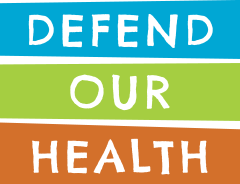Biden EPA Proposes Partial Crackdown on Toxic Air Emissions from the Chemical Industry
April 25, 2023 |
Serious cancer risks would still threaten more than 5 million, mostly Black and Brown people
Today, the U.S. Environmental Protection Agency (EPA) proposed to revise a 17-year-old rule under the Clean Air Act to finally reduce toxic air emissions from about 200 chemical manufacturing plants in the United States, many of them located in Texas and Louisiana. EPA cited serious risks to human health including cancer from ongoing emissions of ethylene oxide, a highly toxic chemical used to make PET plastic bottles and polyester clothing, and more than 50 other hazardous air pollutants, many of which are used to make plastics and rubber. See the EPA proposed rule here. EPA has scheduled a virtual public hearing on the proposed rule for May 16, 2023.
In response to EPA’s proposal, Defend Our Health, a nonprofit environmental public health and justice organization, issued the following statement from Michael Belliveau, Executive Director:
“EPA’s proposal to slash toxic air emissions from the chemical industry is long overdue. It’s welcome news for the millions of Americans in frontline communities who have been over-burdened for decades by unjust industrial pollution and still face serious cancer risks.
However, EPA’s proposed air toxics rule falls far short of the Biden Administration’s commitment to environmental justice and Clean Air Act requirements. Our preliminary analysis reveals major shortcomings that must be corrected before a final rule is adopted:
The proposed rule, even if timely adopted without weakening changes, would:
- Perpetuate environmental racism by leaving 1.6 million Black and Brown residents facing serious cancer risk, representing 64% of those who live within 6 miles of a chemical plant.
- Leave a total of 5.7 million people facing serious cancer risk from living within 31 miles of a chemical plant, only a 21% reduction, contrary to EPA policy to strive to eliminate such risk;
- Fail to limit future increases in toxic air emissions driven by petrochemical plastics, with its rising demand for chemicals and production projected to double in the next decade;
- Fail to require all available control technologies to reduce toxic fugitive emissions, including leakless equipment, infrared monitoring for leaks, and automated leak detection.
EPA must walk its talk on environmental justice and public health protection by adopting a much stronger air toxics rule.”
